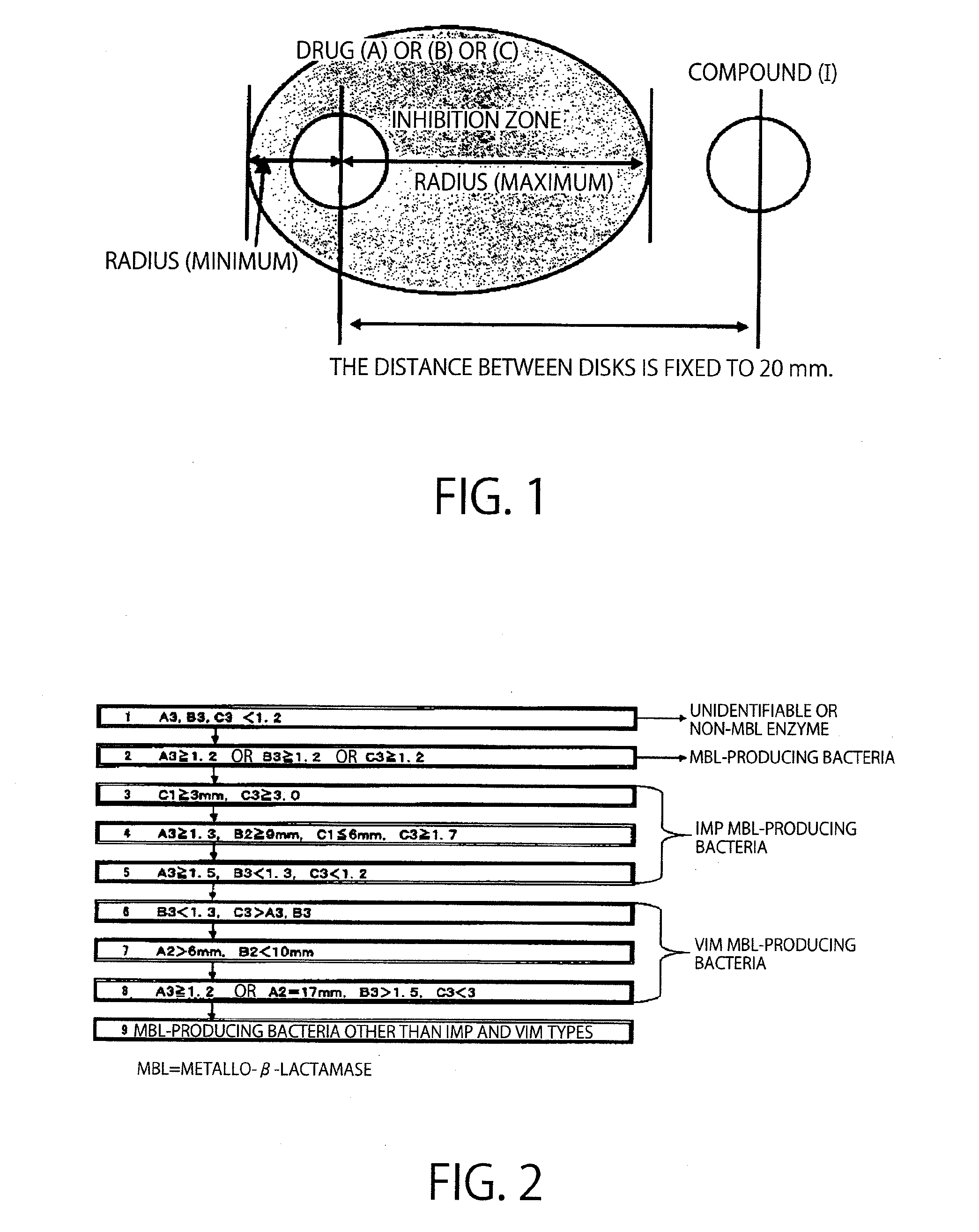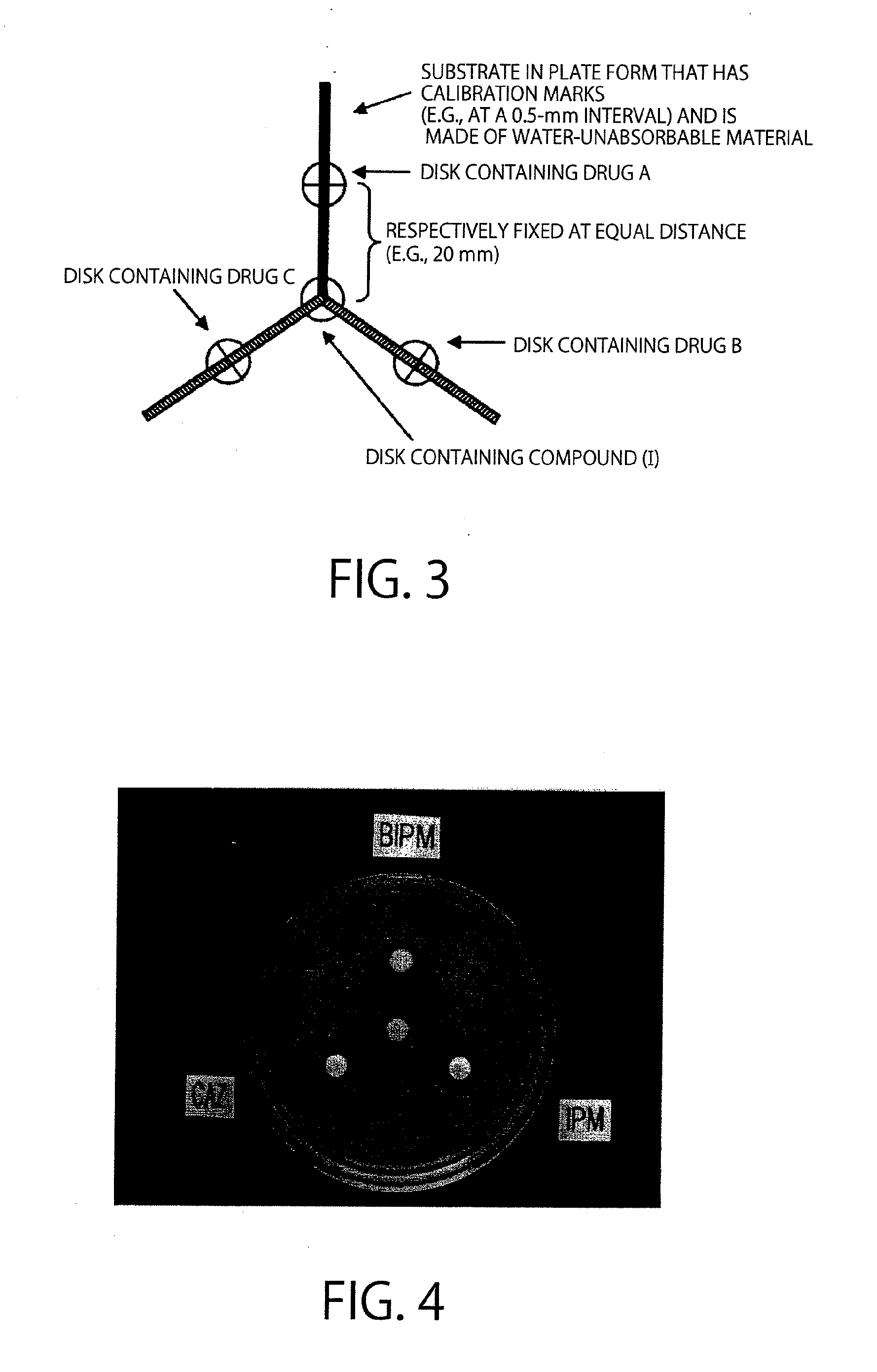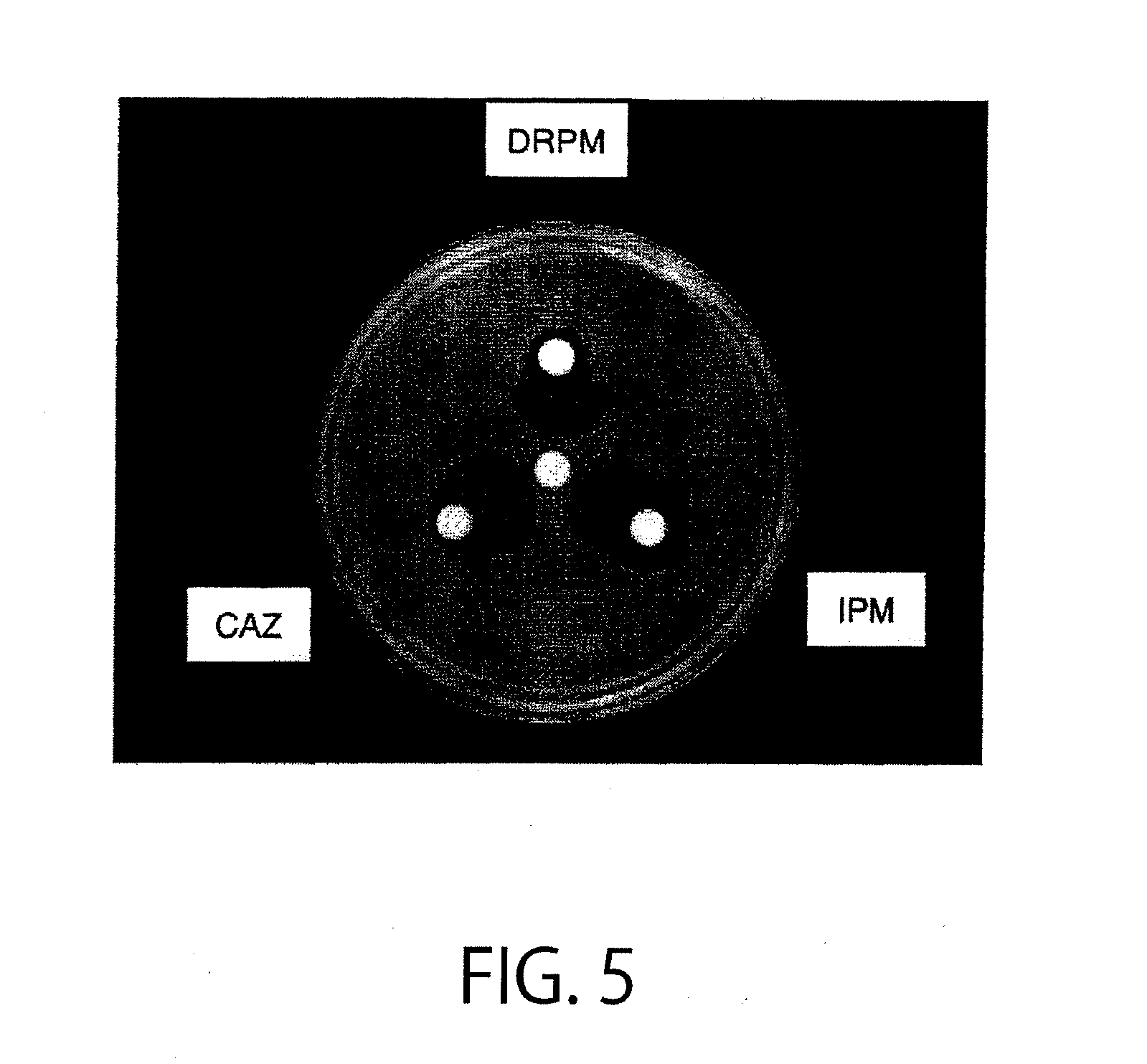Method of identifying metallo-beta-lactamase-producing bacteria
- Summary
- Abstract
- Description
- Claims
- Application Information
AI Technical Summary
Benefits of technology
Problems solved by technology
Method used
Image
Examples
example 1
[0129]A test shown below was conducted using, as bacteria to be tested, a total of 41 strains of Pseudomonas aeruginosa (including Pseudomonas putida): IMP types (10 IMP-1-producing bacterial strains, 18 IMP-7-producing bacterial strains, 4 IMP-10-producing bacterial strains, and 2 IMP-β-producing bacterial strains) and VIM types (3 VIM-1-producing bacterial strains and 4 VIM-2-producing bacterial strains). These 41 strains were strains whose MBL type had already been identified by PCR or the like, and this Example was performed using them.
[0130]According to the disk diffusion method specified by CLSI, a Muller-Hinton agar medium was coated with a bacterial solution adjusted to McFarland standard turbidity of 0.5. No water droplet of the bacterial solution on the medium surface was confirmed, and round filter papers (diameter: approximately 6 mm) respectively containing 300 μg of a compound (I), 100 μg of biapenem as a drug (A), 100 μg of imipenem as a drug (B), and 300 μg of ceftaz...
example 2
[0135]An example of the decision flow of Examples and FIG. 2 will be further described using a photograph of FIG. 4.
[0136]In Example 2, bacteria to be tested were IMP-1-producing Pseudomonas aeruginosa. According to the disk diffusion method specified by CLSI, a Muller-Hinton agar medium was coated with the Pseudomonas aeruginosa, and disks were then placed thereonto. The state after overnight culture at 35° C. is shown in FIG. 4.
[0137]In FIG. 4, the upper disk contained biapenem (BIPM) (A); the lower right disk contained imipenem (IPM) (B); the lower left disk contained ceftazidime (CAZ) (C); and the central disk was a compound (I)-containing disk. The compound (I) used was a compound represented by the formula (I) wherein both R1 and R2 are an ethyl group, and M1 is a sodium cation (disodium 2,3-diethylmaleate). Black portions around the disks are inhibition zones. It is observed that the inhibition zone of each β-lactam agent is changed by the presence of the compound (I)-contain...
example 3
[0138]An identification test was conducted using, as bacteria to be tested, a total of 9 strains of Pseudomonas aeruginosa (including Pseudomonas putida): IMP types (3 IMP-1-producing bacterial strains, 2 IMP-7-producing bacterial strains, and 1 IMP-β-producing bacterial strain) and VIM types (1 VIM-1-producing bacterial strain and 2 VIM-2-producing bacterial strains). 300 μg of a compound (I) wherein both R1 and R2 are an ethyl group, and M1 is a sodium cation (disodium 2,3-diethylmaleate), 100 μg of doripenem (DRPM) as a drug (A), 100 μg of imipenem (IPM) as a drug (B), and 300 μg of ceftazidime (CAZ) as a drug (C) were used to perform culture and inhibition zone measurement in the same way as in Example 1. As a result of determination using the decision flow of FIG. 2, 2 out of the 9 strains corresponded to the flow 3, 4 out thereof corresponded to the flow 4, 1 out thereof corresponded to the flow 6, and 2 out thereof corresponded to the flow 8. All the strains that corresponded...
PUM
 Login to View More
Login to View More Abstract
Description
Claims
Application Information
 Login to View More
Login to View More - R&D Engineer
- R&D Manager
- IP Professional
- Industry Leading Data Capabilities
- Powerful AI technology
- Patent DNA Extraction
Browse by: Latest US Patents, China's latest patents, Technical Efficacy Thesaurus, Application Domain, Technology Topic, Popular Technical Reports.
© 2024 PatSnap. All rights reserved.Legal|Privacy policy|Modern Slavery Act Transparency Statement|Sitemap|About US| Contact US: help@patsnap.com










